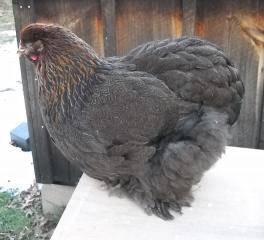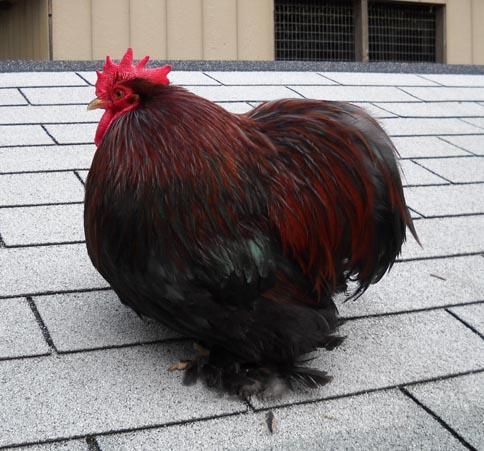Quote:
Hi Nancy,
I've asked the exact same question a couple of times here, because double-mating has also been advocated for Golden-Laced varieties. I found the below articles posted on another thread, which explain the theory of double mating. I haven't run into too many that seriously practice double-mating, especially as it relates to setting up totally separately breeding arrangements to produce the best males and the best females. But I think a lot of folks still practice it in theory - in that they know that putting the best males and best females together will NOT produce the same quality offspring.
That's what I find most difficult to comprehend - if you have a great male, what should you look for/avoid in the females if you want to continue producing great males. And conversely, if you have a great female, what should you look for/avoid in the males if you want to continue producing great females.
Partridge Varieties used to be among the top of Cochin varieties, along with White, Black and Buff. Possibly the reason we still don't see as many in the show rooms any more is because some of the breeding techniques required to produce such beautiful patterns has been lost in translation over the years.
I will be watching very closely for more in-depth responses to your post. Thanx for bringing the subject up again.
WHAT IS SINGLE MATING? The A.B.C. of Breeding Poultry for Exhibition, Egg-Production and Table Purposes
1919
In certain breeds the standard decrees that the characteristics
of the male and female should be different, which necessitates
double-mating, explained below. Where the standard for the
two sexes is practically the same, then single mating is sufficient.
By single mating I mean the breeding of both sexes as exhibition
specimens from one mating or single pen of birds.
WHAT IS DOUBLE MATING? The A.B.C. of Breeding Poultry for Exhibition, Egg-Production and Table Purposes
1919
Double-mating means the mating of two pens, one to produce
exhibition cockerels and the other exhibition pullets. This process
of breeding has done much to spoil many good old breeds, for
few little men have accommodation sufficient to keep two pens.
Many poultry fanciers give this double-mating question some
hard knocks, but we have only the Club Standards to blame. When
a new breed comes into being, the first desire of the faddists is to
draw up a standard that is hard to breed to. They contend that
it is better to have a breed that is difficult to obtain high-class
specimens of, than where we can easily breed winners. As things
are at present, double-mating is necessary in many breeds, and
I leave it at that.
In the case of laced varieties, such as the beautiful Gold and
Silver Laced Wyandottes, we have perforce to adopt the double mating
principles. If we mated the Palace winning Cock to the
Palace winning Pullet we should breed birds that were of very
inferior quality. By fitting up a cockerel-breeding pen and a pullet breeding
pen our chances are excellent. In the cockerel-breeding
pen of any variety the male will be a tip-top show specimen and
his mates females that are not show birds, but merely breeders
likely to throw high-class cockerels when mated to the exhibition
male. The pullets from this mating will, of course, be " duds
and not fit for show purposes. The females in the pullet-breeding
pen will all be first-class exhibition birds and the male not a show
bird, but a breeder most likely to breed tip-top exhibition pullets.
The cockerels from this mating will be " duds " and unfit for the
show bench. The whole modus operandi can be thinned down to
this :The cockerel-breeding male must possess all the necessary
characteristics to breed exhibition cockerels, whilst the pullet breeding
male must boast of those characteristics that will go to
breed exhibition pullets. The system is not so complicated as it
would appear at first sight and is interesting to follow out, but there
must, of course, be many " wasters " in the progenywhether
male or female respectively. In many cases fanciers are satisfied
with breeding one sex only and winning honors with same. They
specialize in pullets or cockerels, keeping the pullet-breeders or
cockerel-breeders only as the case may be. This naturally does
not entail so much work as would be necessary if the two sorts
were bred.
Gail (is it, I hope I got that right. Please forgive me if I'm mistaken)and way, thank you VERY much for the plethora of information. This confirms my suspicion of what the technique is, but I'm fuzzy on how to make the choices of the breeders. I looked at your site and checked out your GL. They look really good to me, do you have an idea of how you're going to select your breeders to make the improvements that you identified.
















